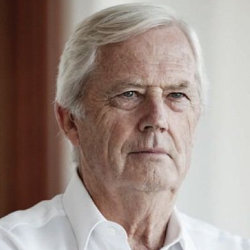For old-time Asia watchers, there was a delicious irony in the way Chile has decided it does not want to be the site of this year’s planned APEC annual meeting.
APEC (Asia-Pacific Economic Cooperation) was born in the Sixties during Cold War competition for the soul of Japan. The then-strong Japanese left-wing argued that Japan’s recovery necessitated a return to its prewar economic connections with China and the rest of East Asia. But reviving those connections would require Tokyo to recognize the communist regimes of China, Korea and Vietnam, which was anathema to the US and the conservatives in Tokyo.
If I happen to know something about this, it is because I was, literally, “there at the creation.” That was in 1968 when as an Australian National University (ANU) scholar for PhD thesis purposes I was based in Japan and attached to the seminar run by Professor Kojima Kiyoshi of Hitotsubashi University, who did so much to help create APEC. In those Vietnam War days, Kojima had close connections with the ANU Japan studies group. Kojima had come up with the concept of a Pacific Free Trade Area – PAFTA.
It said Japan’s economy did not have to rely on the troublesome, backward nations of Asia to the west – specifically the communist nations of China, North Vietnam and North Korea – as it had done in the past. It could rely on the much more reliable democratic nations to the east, in the Pacific – specifically the US, Canada, Australia and New Zealand.
But from the beginning PAFTA’s flaws were obvious.
A free trade area with nations like the US, Canada, Australia and New Zealand would automatically see demands for the dismantling of Japan’s agricultural protectionism.
Kojima’s answer was that the US and the others would overlook the problem. They would realize the Cold War merits of encouraging Japan to look to the Pacific rather than to Asia. They would be willing to give Japan a free ride, he hoped.
Finally, there was also the fact that PAFTA, in turning its back on communist Asia, also had to exclude non-communist Asia.
PAFTA becomes PAFTAD
For these and other reasons, PAFTA died an early death. But Kojima was not going to give up.
He repackaged the idea as some kind of Pacific Vision for the new Japan and sold it to enough politicians and bureaucrats to keep it alive.
For many Japanese, including some progressives, the idea of a postwar Japan making a fresh start looking out towards the advanced Westernized nations of the Pacific rather than having to look backwards to dark impoverished Asia, which had caused Japan such trouble in the past, was attractive.
It was a postwar version of Fukuzawa Yukichi’s Meiji-era concept of datsuA, nyuO(leave Asia, enter Europe).
Kojima moved quickly to have PAFTA replaced by PAFTAD – a talkfest operation where academics could discuss endlessly something called Pacific Trade and Development, even if their governments were reluctant to talk about pie-in-the-sky PAFTA free trade area plans.
PAFTAD was soon supplemented by PBCC (another talkfest operation, this time for businessmen) and the quasi-official PECC (Pacific Economic Cooperation Council) where both the academics and the businessmen could come together for more discussions, this time with bureaucratic and political endorsement.
Meanwhile, Japan’s Gaimusho was toying with various alphabet soup schemes that would see the non-communist Asian nations brought together in some way – ASPAC, MEDSEA.
In the event, they all foundered on vagueness and Asian suspicion of Japanese leadership intentions.
At this point, Japan, with the indefatigable Kojima still at the helm, began to push for something that would allow the wreckage of ASPAC and MEDSEA, together with the floundering PAFTAD, PBCC and PECC, all to be brought together into some entity enjoying full government backing.
It was to be called APEC. And that would be in 1989.
The Birth of APEC
Kojima’s fingerprints were all over the original APEC design.
For example, to retain his original Pacific Basin concept, APEC had to include a bunch of Latin Americans – Mexico, Chile, Peru – whose relevance to Asian trade and development at the time was minimal. If anything, Asian manufacturing interests were, and remain, antagonistic to Latin American interests – as the Peruvians were to discover when cheap Chinese imports put the knife into their fledging textile and garment industries.
At its annual summit meetings it requires the top political leaders of the member nations to assemble and waste time repeating the same free trade platitudes
Even now, the Latinos have to be dragged all the way across the Pacific for meetings of little relevance to them. And APEC has occasionally to drag itself all the way in reverse, simply to maintain the original unrealistic Kojima dream of a pan-Pacific free trade economic unit.
Meanwhile, the Asian communist nations close to Japan had to be kept on the sidelines for as long as possible, even as the distant Latinos had to be included.
And with Taiwan favored over China at the start, the anti-communist agenda also managed to survive for a while, even if today APEC has finally had to bow to realities, with not just China but Russia also included.
Australia to the rescue
There remained the problem of APEC sponsorship. Tokyo was anxious not to repeat its ASPAC experience where Asian suspicions of Japan had caused so much trouble. So it turned to Australia and the heavily involved ANU to take the lead. Then-prime minister Bob Hawke, never reluctant to seek global headlines, was easily persuaded to be the front-runner.
Australia’s businessmen, academics and journalists lined up to speak profusely about the golden opportunities for the Australian economy that would flow from APEC.
In fact, they were to get those opportunities…but from the China that Australia was still going out of its way to antagonize politically, and that APEC had originally been intended to exclude.
APEC has limped along for a decade and a half now, doing little more than provide jobs for an army of academics and bureaucrats.
At its annual summit meetings, it requires the top political leaders of the member nations to assemble and waste time repeating the same free-trade platitudes, and then to wear native clothes for a photo-op, with occasional US leaders having the sense to skip the meetings or leave early.
If it is true, for example, that the year 2000 APEC summit in Okinawa pulled US President Bill Clinton away from the Israeli-Palestinian talks at Camp David for one crucial day, and so caused them to fail, as Clinton himself has claimed, then APEC has a lot to answer for.
True, APEC has collected many member nations, including even a Kremlin that cannot claim great Asian-Pacific relevance. But this simply reflects the way governments will always jump at the chance to join any international grouping for fear of being left out.
Hopefully, the rise of China and the growing clout of ASEAN will eventually put this hybrid outfit out of its misery.
The world has too many international conferences dragging at the timetables of busy political leaders. One less will not do too much harm.
President Emeritus, Tama University, former Vice President, Akita Kokusai Kyoyo Daigaku.



